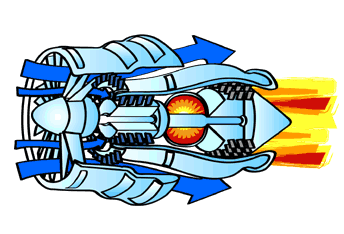If your like me, you like knowing random facts about random things that maybe you will use in a game of trivia! This seemed like a perfect opportunity to learn some random facts about airlines, planes, food, etc. I decided to look up a few different sites and share some of my favorite facts with you from each site!
Site 1:
http://www.flightcentre.com.au/travel-news/travel-news/25-interesting-fun-aviation-facts-never-knew/
Did you know...
An aircraft
takes off or lands every 37 seconds at Chicago O'Hare's International Airport
JFK Airport in New York was originally named Idlewild Airport
The Boeing 747 wing-span (195 feet) is longer than the
Wright Brothers first flight of 120ft
At any given hour there are over 61,000
people airborne over the USA
By American Airlines switching a pilots paper manuals to iPad they will save
$1.2 million in fuel
Pilots and co-pilots are required to eat
different meals in case of food poisoning
About
1/3 of your taste buds are numbed while flying. Maybe that meal was not bland after all?
Site 2:
http://facts.randomhistory.com/airplane-facts.html
About 1 in 5 people have some of fear flying, or “aviophobia.”
Plane exhaust kills more people than plane crashes. Approximately, 10,000 people are killed annually from toxic pollutants from airplanes
In 1986, a plane called Voyager flew all the way around the world without landing or refueling.
In 1947, Chuck Yeager became the first person to fly faster than the speed of sound.
In 2002, a man tried to smuggle two pygmy
monkeys in his underwear onto a plane. He was sentenced to 57 days in jail.
A woman from Stockholm, Sweden, attempted to smuggle 75 live
snakes onto an airplane by placing them in her bra. She also had six lizards under her shorts.
A woman tried to smuggle a baby tiger onto an airplane by sedating it and then placing it in a suitcase with stuffed toy tigers. However, her plan was foiled when the
X-ray in the security check showed that one of the “stuffed toys” actually had bones
A 66-year-old man tried to smuggle
cocaine on a plane—via a cast made out of the drug. He had even purposefully broken his leg in case airport authorities X-rayed it. He almost got away with his crime, but when authorities found other sources of cocaine hidden in his luggage, they decided to also test the cast.
The air on airplanes is filtered by the same technology that filters air in hospitals, so while the tray table may harbor germs, the air is clean.
Site 3:
https://confessionsofatrolleydolly.com/2013/05/31/top-50-useless-aviation-facts/
A man once wore 70 items of clothing in a Chinese airport to avoid the baggage charge
Air travel is the second safest form or transportation. Only the elevator/escalator is safer, although it would take quite some time to travel 1,000 miles on an escalator.
The reason why the lights are turned off during takeoff and landing is for your eyes to adjust to lower levels of light. If there’s an accident and they have to activate the emergency slides, studies have shown that you will be able to see better and therefore be able to evacuate more quickly and safely
Only around 25% of first class passengers pay full fare. The rest are upgrades, frequent fliers and airline employees.
Only 5% of the world’s population has never been on an aeroplane








